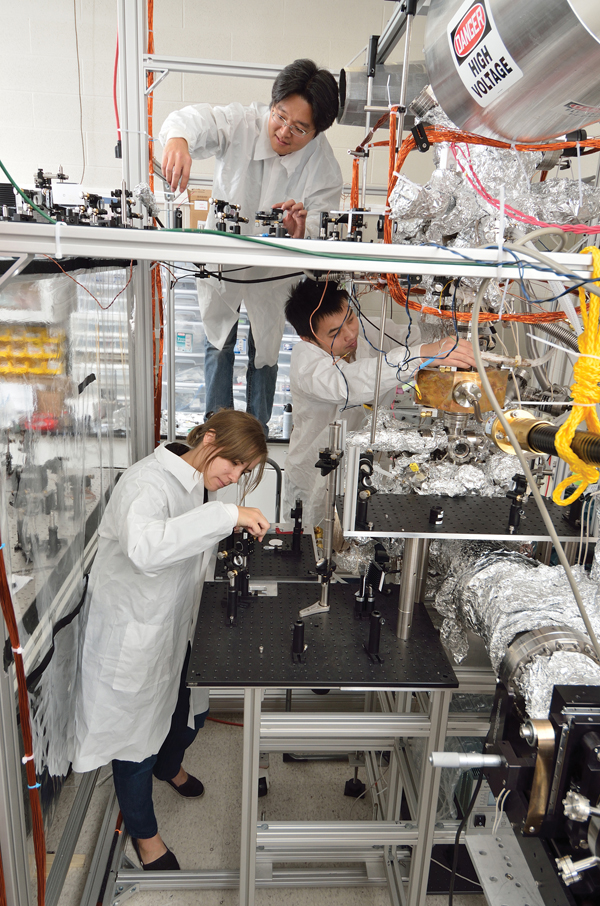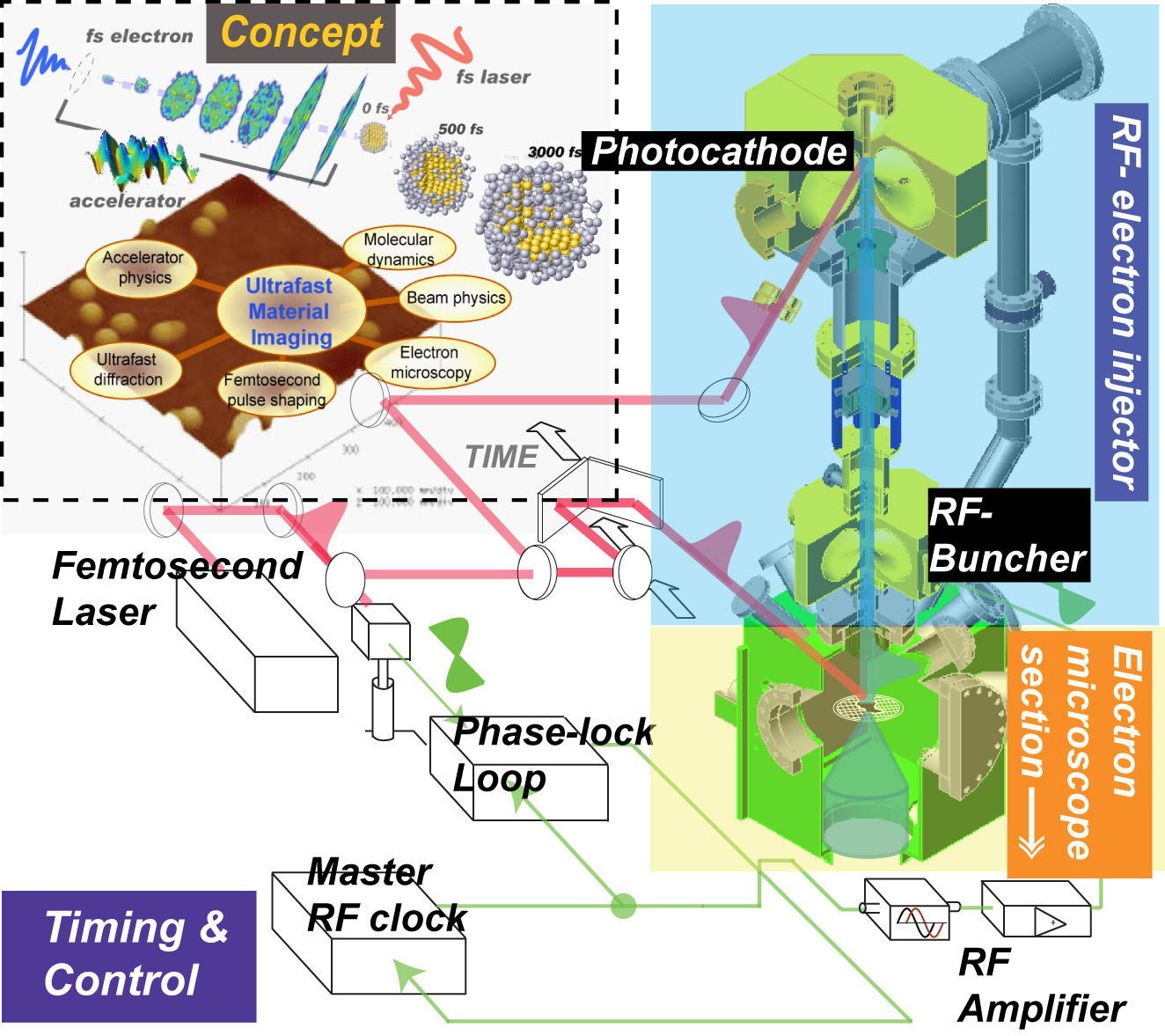New electron microscope captures movements of atoms and molecules
December 3, 2013

A new microscope invented at MSU allows scientists to zoom in on the movements of atoms and molecules (credit: MSU)
A new microscope invented at Michigan State University allows scientists to zoom in on the movements of atoms and molecules.
Electron microscopes allow scientists to see the structure of microorganisms, cells, metals, crystals and other tiny structures that weren’t visible with light microscopes. But the relationship between structure and function could only be estimated because of static images. In the 1990s, researchers added a fourth dimension — time — by using a laser to capture images of gaseous molecules as they were reacting.
Now, Chong-Yu Ruan, MSU associate professor of physics and astronomy, has brought these “molecular movies” down to the nanoscale level, where the properties of materials begin to change. The work has applications in nanoelectronic technologies and in clean-energy industries.
Femtosecond timescale
Ruan’s team is one of the few in the world actively developing electron-based imaging technology on the femtosecond timescale. One femtosecond is one-millionth of a billionth of a second — a fundamental timescale that atoms take to perform specific tasks, such as mediating the traffic of electrical charges or participating in the chemical reactions.
“Implementing such a technology within an electron microscope setup allows one to examine crucial functions in nanoscale devices,” Ruan said. “The goal is to explore the limits where specific physical, chemical and biological transformations can occur.”
Ruan and his collaborators filed a patent on the device, and he also envisions the essential components of the device being modular so they can be add-ons to an existing electron microscope, allowing scientists to extend the capabilities of these devices without building the whole device.
“An electron microscope costs between $1 million and $10 million,” Ruan said. “I expect our device to cost as little as $500,000. It would allow electron microscopes to be updated with increased resolution for less money than buying a new one.”

Ultrafast electron microscope (UEM) configuration. The key component of the microscope is an RF electron injector column, consisting of a photocathode, housed in a high-vacuum electron gun chamber, and an RF buncher system, used to recompress the space-charge-broadened photoelectron bunches into the femtoseond-to-picosecond regimes, before being delivered to the samples housed within the conventional electron microscope system to provide time-resolution for material imaging. The UEM system also includes a laser-RF synchronization scheme, as described by a phase-lock-loop system, and solid-state RF amplifier system. (Credit: MSU)
Ruan is expanding the work to ultrafast electron crystallography, which allows him to look at nanocrystals, their bonds and how they’re affected by their surfaces and water. He’s also working to develop a radio frequency-enabled, high-brightness electron microscope.
Ruan, Berz, Duxbury and Crimp are part of the organizing committee for the forthcoming Femtosecond Electron Imaging and Spectroscopy Conference Dec. 9-12, which will focus on the future for this field of research.
Abstract of Journal of Applied Physics paper
Understanding space charge effects is central for the development of high-brightness ultrafast electron diffraction and microscopy techniques for imaging material transformation with atomic scale detail at the fs to ps timescales. We present methods and results for direct ultrafast photoelectron beam characterization employing a shadow projection imaging technique to investigate the generation of ultrafast, non-uniform, intense photoelectron pulses in a dc photo-gun geometry. Combined with N-particle simulations and an analytical Gaussian model, we elucidate three essential space-charge-led features: the pulse lengthening following a power-law scaling, the broadening of the initial energy distribution, and the virtual cathode threshold. The impacts of these space charge effects on the performance of the next generation high-brightness ultrafast electron diffraction and imaging systems are evaluated.
